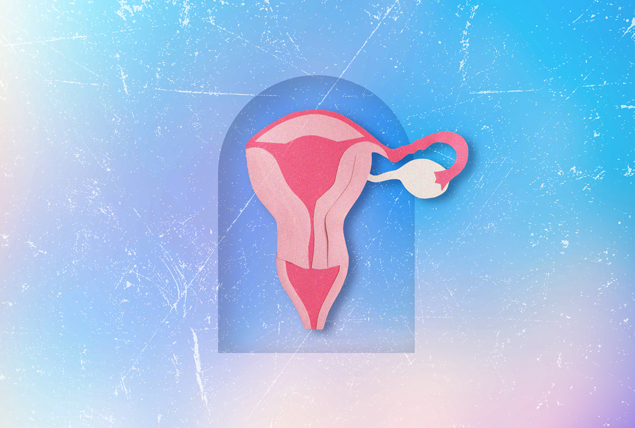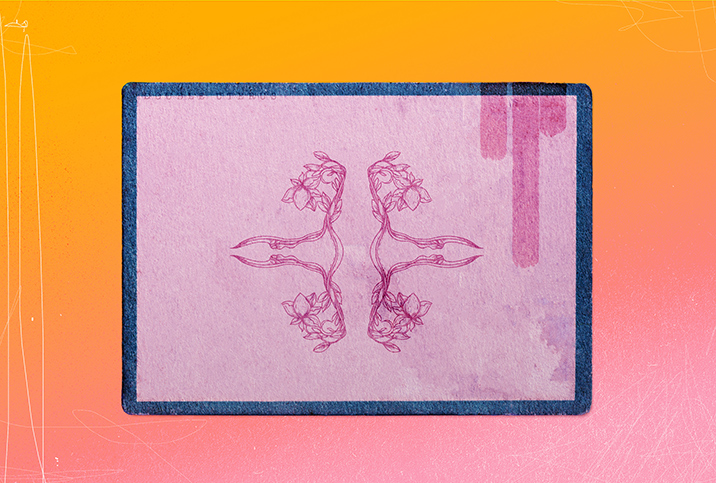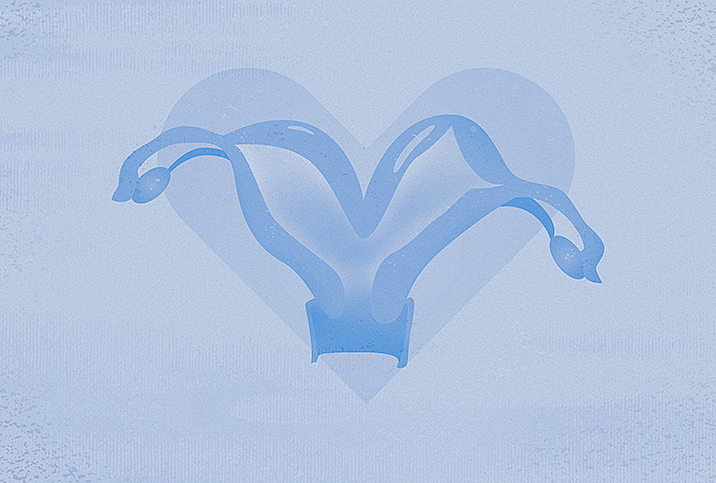What Is a Unicornuate Uterus?

A unicornuate uterus is a rare congenital condition where someone's uterus has not developed properly. Smaller than a typical uterus and with the presence of a single fallopian tube, the resulting shape is nicknamed "a uterus with one horn." This "horn" occurs in about 75 percent of people with a unicornuate uterus.
Although a unicornuate uterus forms during fetal development, it can affect reproductive processes such as pregnancy, fertility and menstruation later in life.
How does a unicornuate uterus happen?
This irregularity occurs when a woman has half of a uterus present and one developed fallopian tube instead of two, explained Monica Grover, D.O., an OB-GYN and the chief medical officer at VSPOT, a women's intimate health platform in New York City. A unicornuate uterus is an anomaly that originates when the fallopian tubes have not developed properly, Grover explained.
"One tube will result in only a partial development of the uterus," Grover said.
A unicornuate uterus is typically smaller than an average-sized uterus because of the partial development. In early fetal development, Mullerian ducts are tubes that form into reproductive organs.
"If the Müllerian ducts are underdeveloped for any reason, a unicornuate uterus may be the result, and there will be no fusion with the underdeveloped fallopian tube," Grover said.
While a unicornuate uterus is extremely rare, occurring in an estimated 1 in 4,020 women in the general population, it's common for those with the anomaly to have a rudimentary horn.
"Depending on development, the other side can exist in isolation," explained Beri Ridgeway, M.D., a board-certified OB-GYN in Cleveland and a co-founder of Ina Labs, creators of skincare and feminine hygiene products.
"This horn may or may not contain endometrial tissue, and there are different classifications of its communication with the uterus," Grover added.
Ridgeway explained that the cause of a unicornuate uterus is unknown. There's no way to prevent its formation. Its impact on reproductive function can vary, ranging from nonexistent to severe.
Menstruation with a unicornuate uterus
People with a unicornuate uterus can still menstruate. Grover explained that a unicornuate uterus might result in dysmenorrhea, or painful menstruation.
"A unicornuate uterus can cause painful menstruation if there is a rudimentary horn that is not connected to the rest of the uterus. This horn can cause painful periods because the blood cannot flow through it and out of the vagina," explained Darren Salinger, M.D., of MOMZ Ob/Gyn in South Florida.
"Because the underdeveloped uterus or horn may not completely empty into the vaginal canal, there can be a backup of menstrual blood and thickening of the lining, which can result in significant pain," Grover said.
With a rudimentary horn, there is also more risk for pelvic pain and endometriosis due to the backup of menstrual blood.
Unicornuate uterus can also lead to increased risk of other conditions.
"People with congenital uterine anomalies have a high risk for renal, or kidney, and ureter, the tube that connects kidney to bladder, anomalies," Ridgeway explained.
Regular visits to a healthcare professional are recommended.
Pregnancy risks with a unicornuate uterus
Since a unicornuate uterus can be asymptomatic, some people may never know they have this condition. Many people with a uterus don't discover this congenital irregularity until much later in life, such as during pregnancy.
Complications may arise during pregnancy. While pregnancy outcomes are variable due to the specific irregularity, they can be severe.
For people with a unicornuate uterus, the miscarriage risk can be higher than for those people without the anomaly.
"People need to be aware of the increased risk of miscarriage. As pregnancy continues, reduced activity could be helpful in prolonging pregnancy and decreasing the risk of preterm labor. A cerclage, or cervical stitch, may be indicated to reduce the risk of preterm delivery," Salinger said.
Thorough prenatal care is recommended for a person with a unicornuate uterus. A pregnancy with a unicornuate uterus is always considered high risk, Grover said, and requires more frequent doctor's appointments for monitored care by obstetricians and radiologists.
"A person with a unicornuate uterus should watch for signs and symptoms of preterm labor," Ridgeway said, adding that they are at higher risk for abnormal presentation or breech birth, when a baby is born bottom-first instead of headfirst.
Sometimes people may struggle to become pregnant with a unicornuate uterus. Salinger explained that in vitro fertilization (IVF) with an embryo transfer can help couples with infertility. However, patients should be evaluated for ectopic pregnancy, which can lead to life-threatening rupturing.
Pregnancy in a rudimentary horn of the uterus is a rare clinical condition occurring in 1 in 100,000 to 140,000 pregnancies.
"If a pregnancy develops in the rudimentary horn, this is analogous to an ectopic pregnancy that is not viable and would require emergency surgery," Grover explained.
In the case of ectopic pregnancy, an embryo implants outside the uterus and cannot develop; it's a life-threatening complication if left untreated.
A unicornuate uterus may also impact labor and delivery. An obstetrician may recommend a cesarean section, or C-section.
"Delivery may require a cesarean section because the uterus may not have enough room to allow for a natural delivery or the fetus may be in a position not consistent for natural delivery," Salinger said.
Diagnosing a unicornuate uterus
The diagnosis of a unicornuate uterus is often missed because most people are asymptomatic, Ridgeway said.
"A unicornuate uterus, with or without a rudimentary horn, may not always be diagnosed so readily," Grover added.
The anomaly can be discovered during an ultrasound or imaging to investigate pain, Ridgeway said. It can also be identified in pregnancy or found incidentally when getting imaging for another reason, she said.
Usually, detection occurs when someone is experiencing complications.
"If a female is symptomatic with pain out of proportion during her menses, or has a history of miscarriages, then further testing may be done with an MRI or a hysterosalpingogram, which would be the gold standard in diagnosing the anatomical malformation," Grover explained.
Typically, a unicornuate uterus is not identified during a routine wellness exam. A unicornuate uterus may certainly present complications for reproductive processes such as pregnancy and menstruation, and deviations can be highly variable.
"There are different degrees of abnormalities, ranging from a small uterine defect, such as a uterine septum, to a large uterine septum, to duplication of the uterus, even duplication of the cervix and vagina, as well as a one-sided uterus," Salinger explained.
Depending on the specific irregularity, a doctor may recommend surgical treatment, usually to remove a rudimentary horn because of its potential to adversely impact pregnancy and menstruation. While close care for pregnancy is required, it's significant to note that people with a uterine irregularity can have a completely normal life, Salinger said.
The bottom line
A unicornuate uterus is a congenital condition that develops during early pregnancy but is typically not discovered until later in life. Pregnancy is possible for people with this medical condition and should include increased monitoring.
To locate a top-rated health professional in various specialties, turn to Giddy Telehealth. Enjoy the easy-to-use online portal and find a healthcare provider who fits your needs.


















